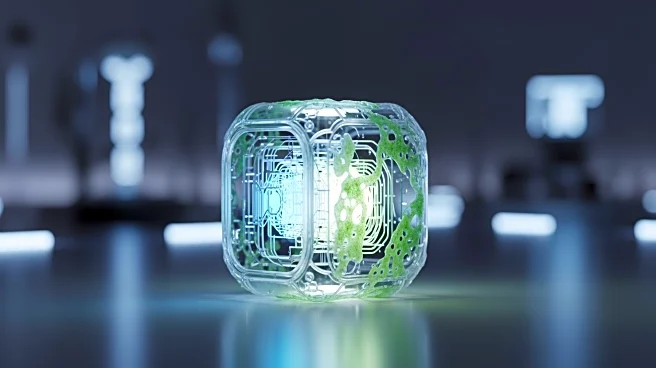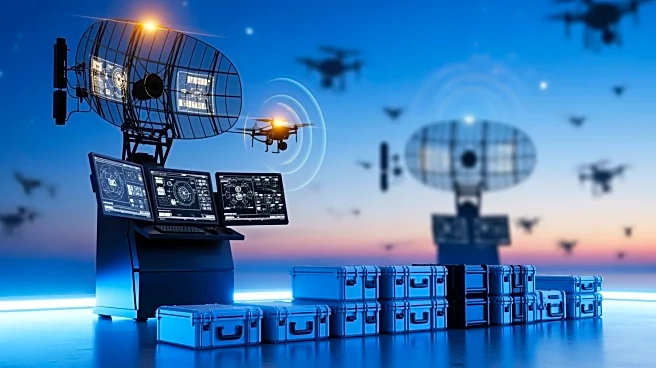What's Happening?
Researchers at EPFL in Switzerland have developed a fully edible soft robot, including an ingestible battery. The robot is designed to be safe for consumption, with components made from gelatin, wax, citric acid, and baking soda. The battery generates
CO2 gas to power the robot's actuator, which is controlled by an ingestible valve. This innovation aims to provide a method for delivering nutrition or medication to elusive animals, such as wild boars, by mimicking live prey. The robot is part of the EU-funded RoboFood project, which explores biodegradable pneumatic robots.
Why It's Important?
The development of edible robots represents a significant advancement in environmental and sustainable robotics. By creating biodegradable and ingestible robots, researchers are addressing the need for eco-friendly solutions in technology. This innovation could lead to new methods for administering vaccines or medications to wildlife, reducing human intervention and potential harm. Additionally, the technology could be adapted for human use, offering novel ways to deliver nutrients or medications. The project highlights the potential for scalable, affordable robotic solutions that minimize environmental impact.
What's Next?
The RoboFood project continues to explore edible robotics, with researchers working on other ingestible robots that store and release elastic energy. Future developments may include robots that can jump, offering new applications in both wildlife management and human consumption. The team is also conducting consumer experience analyses to refine the taste and texture of these robots, potentially leading to commercial partnerships. As the technology evolves, it may integrate with existing food and pharmaceutical industries, providing innovative delivery systems.
Beyond the Headlines
The ethical implications of edible robots are significant, as they challenge traditional views on robotics and consumption. This technology raises questions about the intersection of food and machinery, and how society perceives the integration of robotics into daily life. The project also prompts discussions on the sustainability of robotics and the importance of developing technologies that align with environmental goals.
















